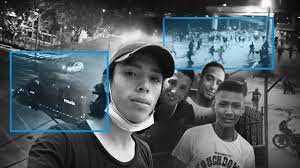
At least five people were shot dead in south-west Colombia in the latest of a series of attacks by armed groups.
Two people have died at the scene and three more died later in hospital.
A 15-year-old girl was among the reported deaths. Six other people suffered different injuries.
A military commander blamed a breakaway rebel group for the attack.
Army officials said that armed men had opened fired at “a public venue” in the town of Tumaco.
Local media described the venue as a discotheque.
Major-General Álvaro Pérez said a group of dissident former Farc rebels calling itself the Uriel Rendón Column was to blame.
In July, dissident Farc rebels claimed responsibility for an attack on a helicopter carrying President Iván Duque.
Colombia’s institute for the study of development and peace keeps a tally of what it calls “massacres”.
It says that there have been 72 such “massacres” between 1 January and 21 September.
Nariño province, where the latest attack happened, witnessed an increase in deadly attacks.
What’s the background?
Murder rates have fallen since the government signed a peace deal with Colombia’s main rebel group, the Revolutionary Armed Forces of Colombia (Farc), in 2016.
2019 had among the lowest number of homicides since 1975, according to figures from Colombia’s ministry of defence.
But breakaway factions of the Farc remain active in rural areas of the country, where they engage in extortion and drug trafficking.
The country’s second-largest rebel group, the National Liberation Army (ELN) is also still active. There are a number of right-wing paramilitary groups originally founded to fight the left-wing rebels.
Despite the fall in homicide number, human rights and land rights activists have been killed by their dozens.
But armed attacks such as on those gathered in Samaniego are unusual and reawaken memories of darker times in Colombia when its armed groups would carry out mass killings, especially in rural areas where there was no or little presence of the security forces.


